Short Communication - (2022) Volume 9, Issue 1
Quantum Gravity Constants
Adel Mathlouthi*Received: 31-Jan-2022, Manuscript No. tophy-22-58492 ; Editor assigned: 02-Feb-2022, Pre QC No. tophy-22-58492 (PQ); Reviewed: 16-Feb-2022, QC No. tophy-22-58492 ; Revised: 21-Feb-2022, Manuscript No. tophy-22-58492 (R); Published: 28-Feb-2022
Abstract
Gravity was the first fundamental force that humanity recognized, yet it remains the least understood. Physicists can predict the influence of gravity on stars and planets with exquisite accuracy, but no one knows how the force interacts with minute particles, or quanta. The nearly century-long search for a theory of quantum gravity a description of how the force works for the universe’s smallest pieces is driven by the simple expectation that one gravitational rule should govern all galaxies, quarks and everything in between. No theory has yet proven successful in describing the general situation where the dynamics of matter, modeled with quantum mechanics, affect the curvature of space-time. If one attempts to treat gravity as simply another quantum field, the resulting theory is not renormalizable. Even in the simpler case where the curvature of space-time is fixed a priori, developing quantum field theory becomes more mathematically challenging, and many ideas physicists use in quantum field theory on flat space-time are no longer applicable.
Keywords
Quantum gravity, Gravity, Physics, Quantum mechanics
Abstract
Gravity was the first fundamental force that humanity recognized, yet it remains the least understood. Physicists can predict the influence of gravity on stars and planets with exquisite accuracy, but no one knows how the force interacts with minute particles, or quanta. The nearly century-long search for a theory of quantum gravity a description of how the force works for the universe’s smallest pieces is driven by the simple expectation that one gravitational rule should govern all galaxies, quarks and everything in between.
No theory has yet proven successful in describing the general situation where the dynamics of matter, modeled with quantum mechanics, affect the curvature of space-time. If one attempts to treat gravity as simply another quantum field, the resulting theory is not renormalizable. Even in the simpler case where the curvature of space-time is fixed a priori, developing quantum field theory becomes more mathematically challenging, and many ideas physicists use in quantum field theory on flat space-time are no longer applicable.
Introduction
Note
A-Physics Equations and Formulas
B-Quantum gravity constants
C-Quantum Dirac constants
D-A quantum black hole unit system
E-The Planck dimensions
F-The universe dimensions
G-Surface gravity and quantum speed at the horizon of a quantum black hole (Quantum universe)
H-The Planck dimensions (the Big Bang time)
I-The universe dimensions (End of the Triassic era about 199 million years ago)
The gravitational constant really a fundamental constant in physics, so it is important to test this basic assumption using objects in different gravitational places, times and conditions The fact that we see gravity doing the same thing in our solar system as it does in a distant star system without knowing How gravity behaves inside black holes, be it quantum or astronomical [1-7].
A-Physics Equations and Formulas
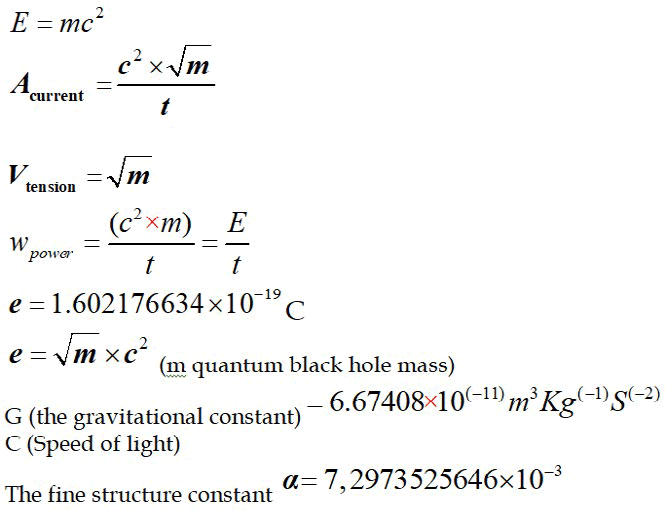
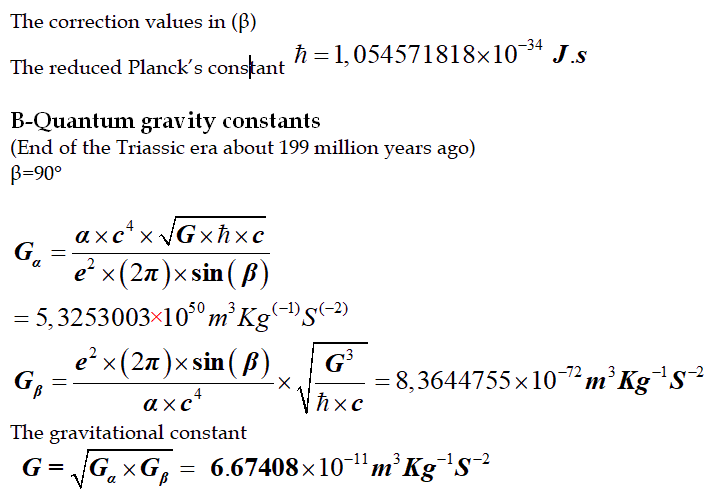
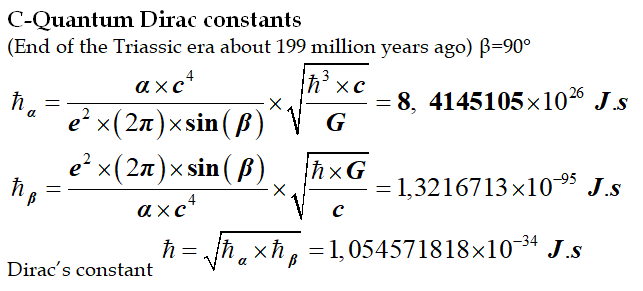
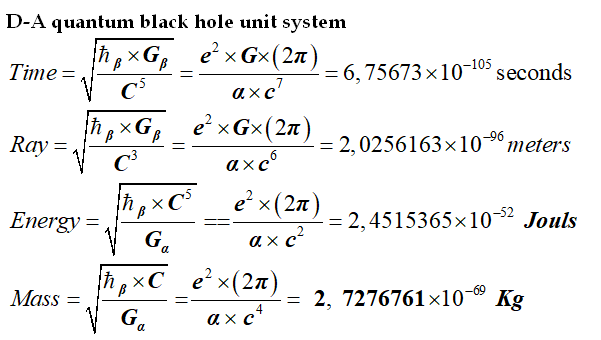
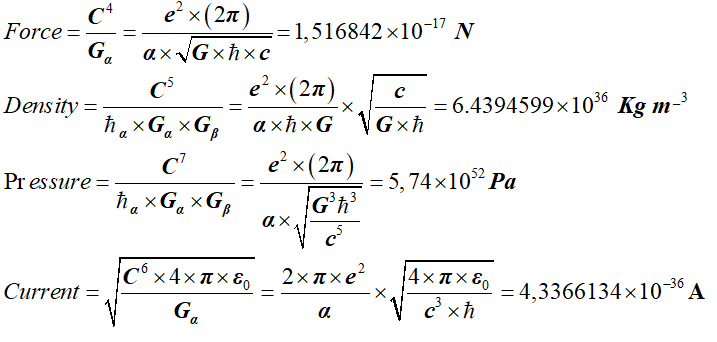
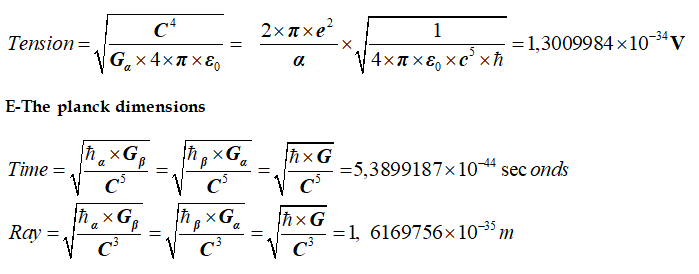
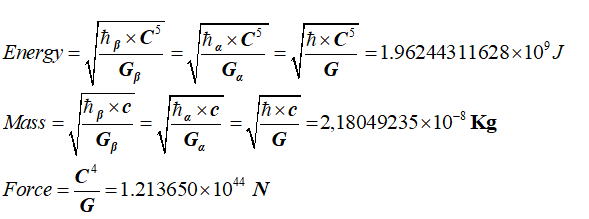
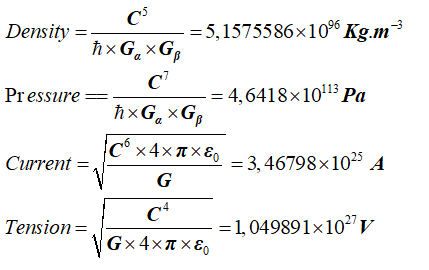
F-The universe dimensions (The radiation era)
(End of the Triassic era about 199 million years ago)
End-Triassic extinction, also called Triassic-Jurassic extinction, global extinction event occurring at the end of the Triassic Period (about 252 million to 201 million years ago) that resulted in the demise of some 76 percent of all marine and terrestrial species and about 20 percent of all taxonomic families. It is thought that the end-Triassic extinction was the key moment that allowed dinosaurs to become the dominant land animals on Earth. The event ranks fourth in severity of the five major extinction episodes that span geologic time.

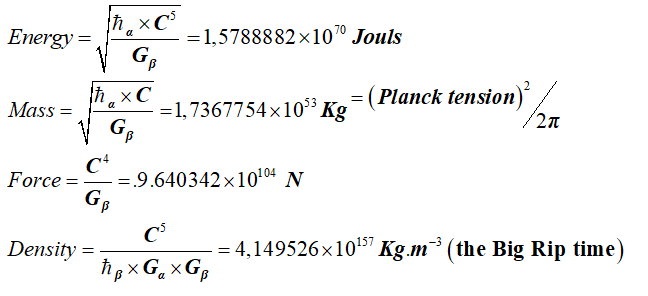
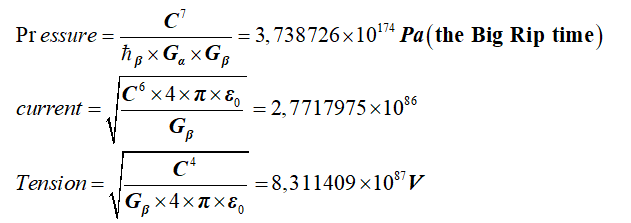

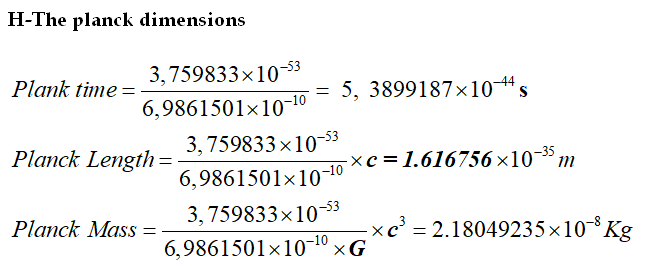

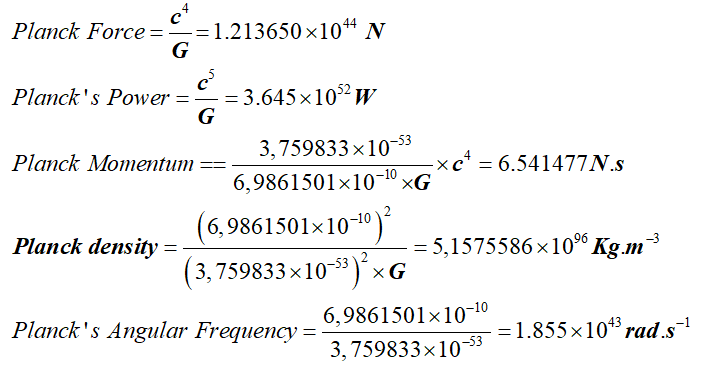
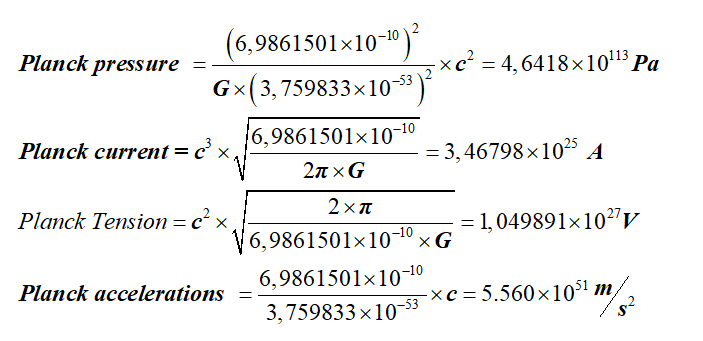
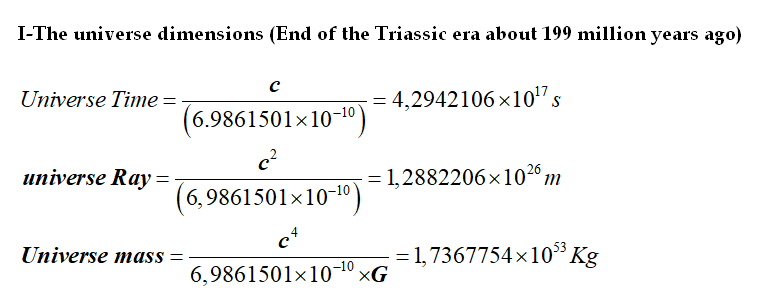

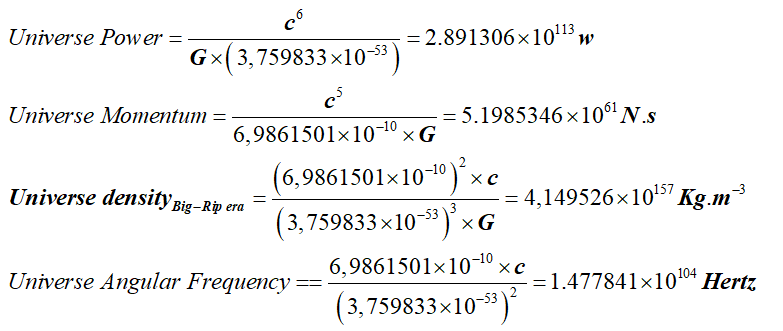


Conclusion
This work leads us to a complete quantum theory. Alternatively, it might be reasonable to use a model called quantum gravity, which deals with space-time as a tiny structure woven from rings the size of the Planck. In this description of physics, there is simply a concept of smaller than Planck sizes. While something of this kind is likely to be true in the full quantum theory of gravity, this structure is expected to emerge from the theory, rather than being a fundamental assumption of the theory. Although this work may be a viable candidate for a whole theory of quantum gravity, it may give insight into what happens at the centripetal diffraction of a quantum black hole.
References
- E. L. Wright. Javascript Cosmology Calculator. With a default=69.6 (based on arXiv: 1406.1718), the calculated age of the universe with a redshift of z=1100 is in agreement with Olive and Peacock (about 370,000 years).2018.
- Maoz. Going forward in time now, the temperature declined, and at T∼3000 K, few of the photons in the radiation field, even in its high-energy tail, had the energy required to ionize a hydrogen atom. Most of the electrons and protons then recombined. Once this happened, at a time trec=380,000 yr after the Big Bang, the major source of opacity disappeared, and the Universe became transparent to radiation of most frequencies.2016;251-252
- R. Johann. Connecting QGP-Heavy Ion Physics to the Early Universe. 243–244 (2013): 155–162.
- Ryden, Barbara Sue (2003). Introduction to cosmology. San Francisco: Addison-Wesley.
- M. Agostini. Test of Electric Charge Conservation with Borexino. Phys. Rev. Lett. 115, 231802.
[Cross Ref] [Google Scholar] [PubMed] [Research Gate]
- S. Hocknull. Geoscientists at Queensland Museum (qm.qld.gov.au). 2010.
- S. Narison. Particles and the Universe, From the Ionian School to the Higgs Boson and Beyond. World Scientific Publishing Company Pte Limited. 2015:219.
Copyright: This is an open access article distributed under the terms of the Creative Commons Attribution License, which permits unrestricted use, distribution, and reproduction in any medium, provided the original work is properly cited.